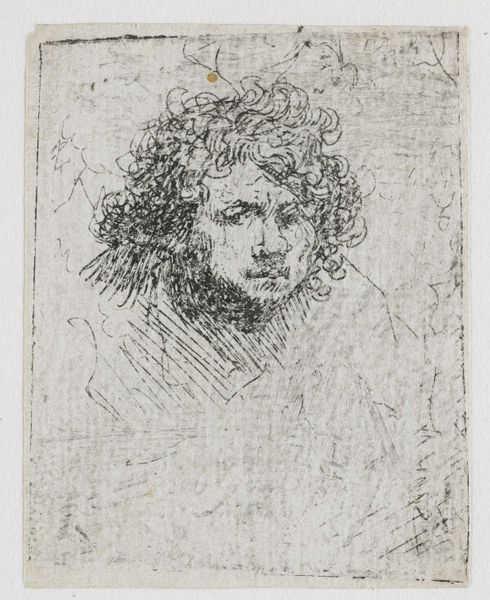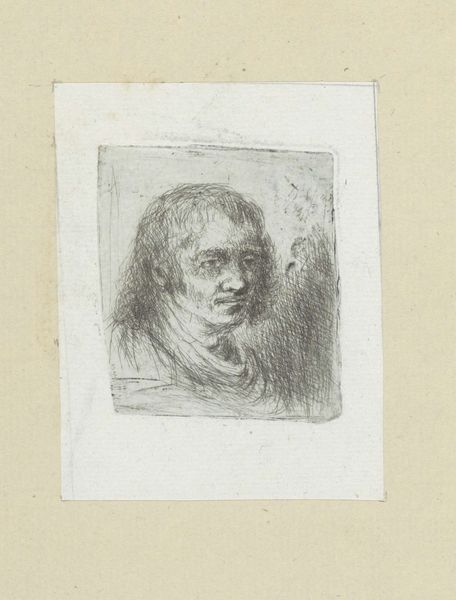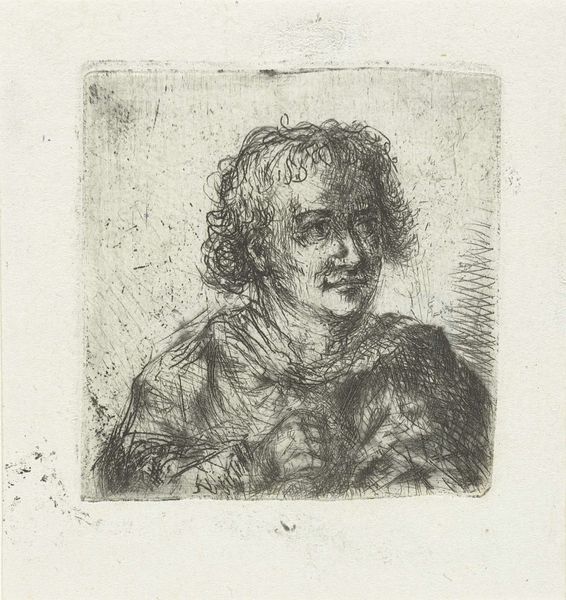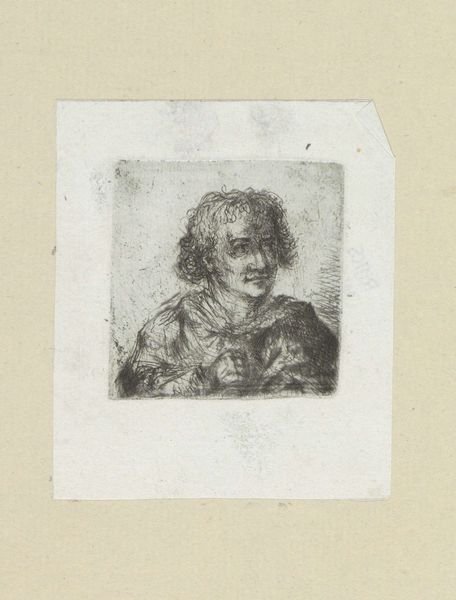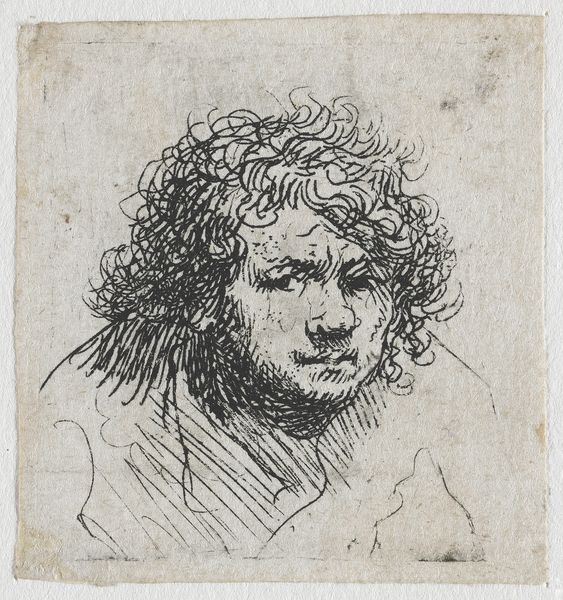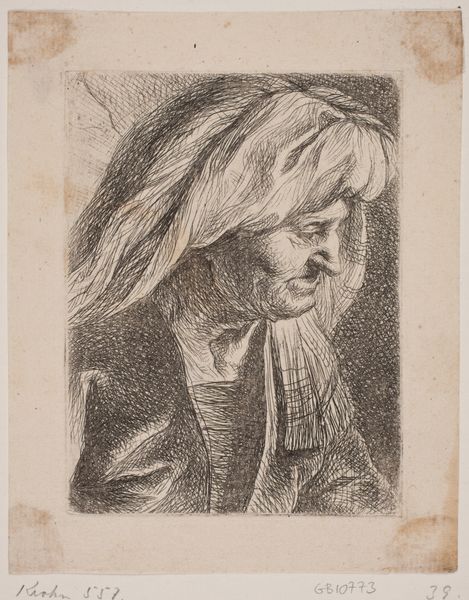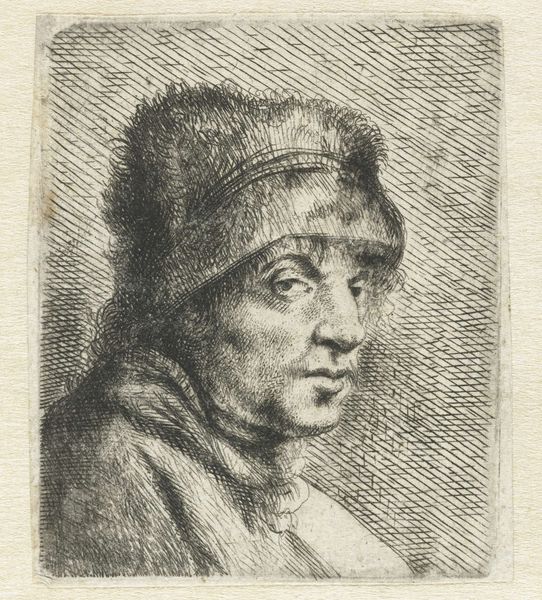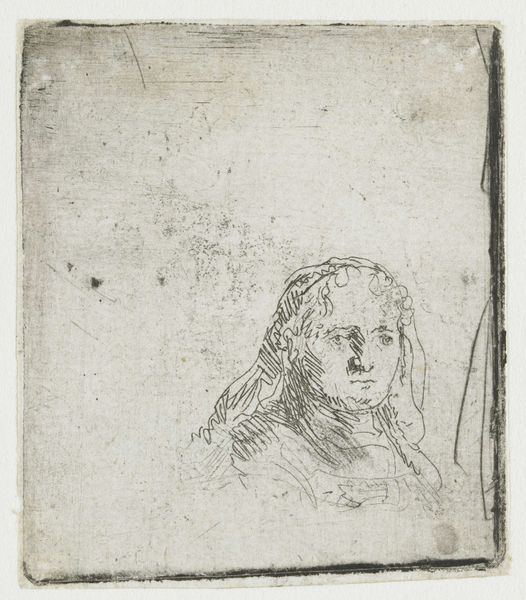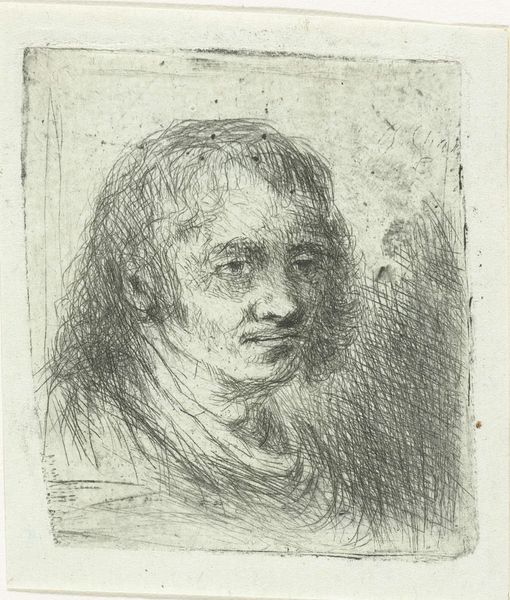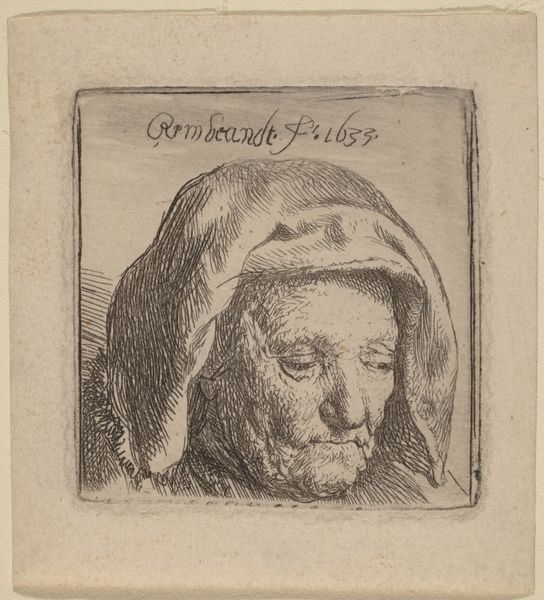
drawing, print, etching, paper, ink
#
portrait
#
drawing
# print
#
etching
#
paper
#
ink
#
coloured pencil
Dimensions: 32 × 29 mm (image); 32 × 29 mm (plate); 39 × 37 mm (sheet)
Copyright: Public Domain
Editor: Here we have "Head of a Breton," an etching by Charles Jacque. It's small, intimate even, and the subject's direct gaze gives the piece an intriguing warmth. How do you interpret this work? Curator: It strikes me as an exercise in capturing a specific archetype, a cultural symbol rendered through the immediate medium of etching. Notice the somewhat stylized, almost theatrical expression. What cultural memories does that evoke? Does it hint at the figure's role within a broader social narrative? Editor: I suppose there's a certain romanticized notion of rural life that might be influencing the expression. How much of this do you see as an authentic portrayal versus a constructed image of the Breton people? Curator: Ah, that is precisely the tension at play! Consider the cultural context. 19th-century portrayals of rural communities often oscillate between ethnographic record and sentimental projection. Jacque uses the tools of printmaking to disseminate an image. Is he holding up a mirror, or constructing a mythology? Editor: That makes me think about how easily visual symbols can be manipulated and the stories they can tell, regardless of their authenticity. The direct gaze, it seems, demands an answer. Curator: Precisely! Each line contributes to a visual language steeped in cultural assumptions, prompting a crucial question: how do we negotiate the space between artistic representation and societal narrative? Editor: Thank you! This perspective has certainly widened my appreciation for not just what's depicted, but the layers of cultural meaning imbued in this small, captivating etching. Curator: And for me, it's a valuable reminder of how deeply our cultural consciousness is embedded in even the smallest image.
Comments
No comments
Be the first to comment and join the conversation on the ultimate creative platform.
